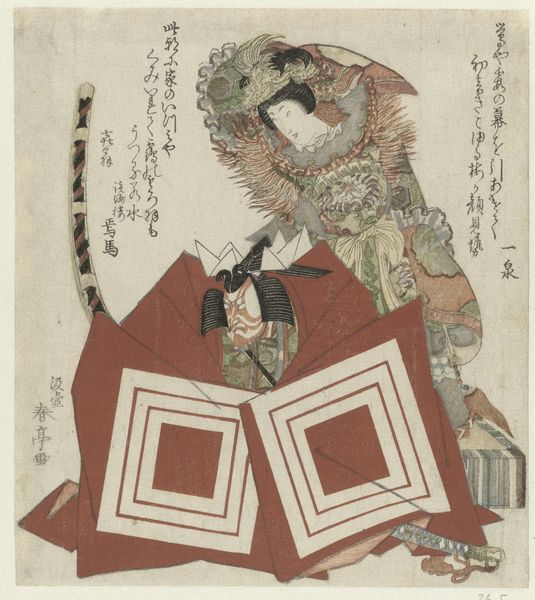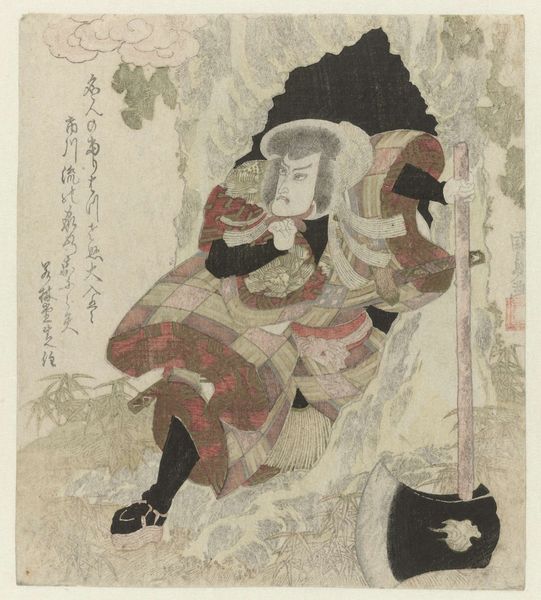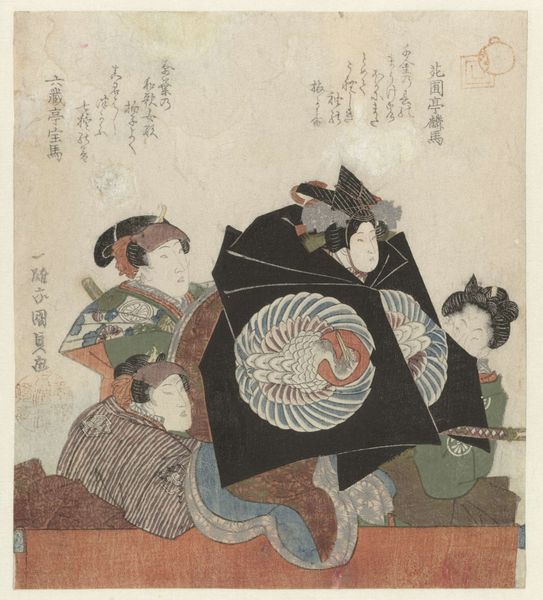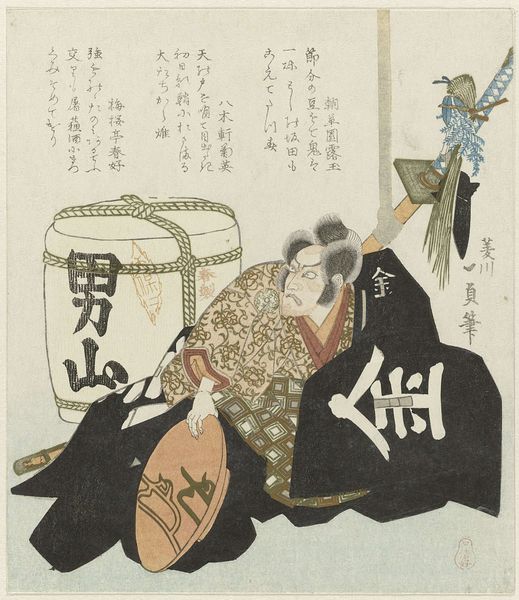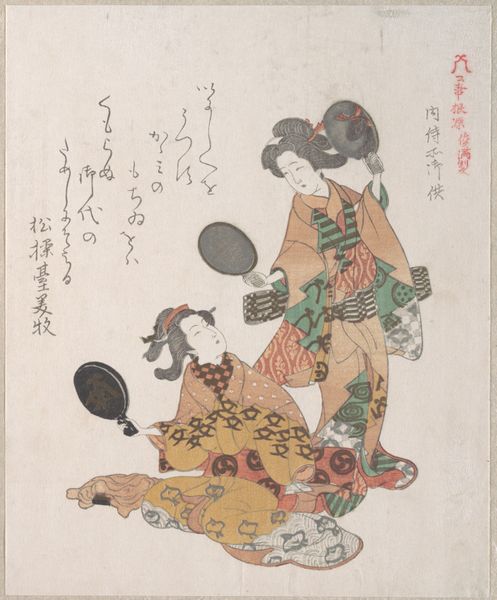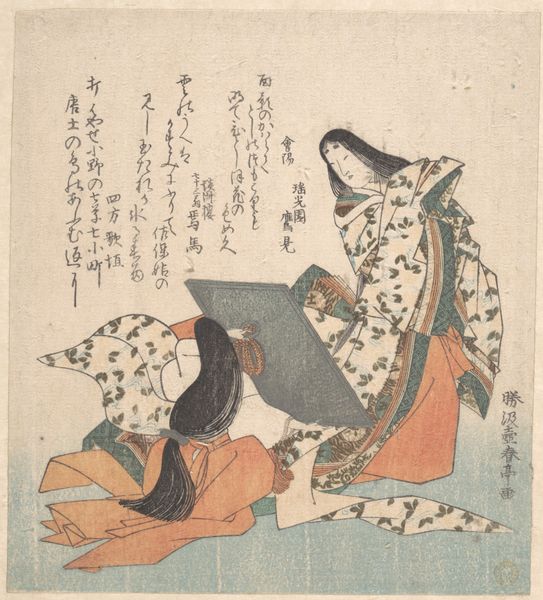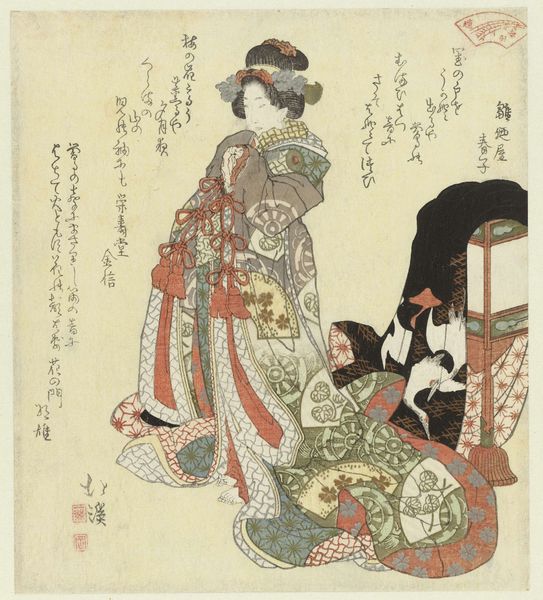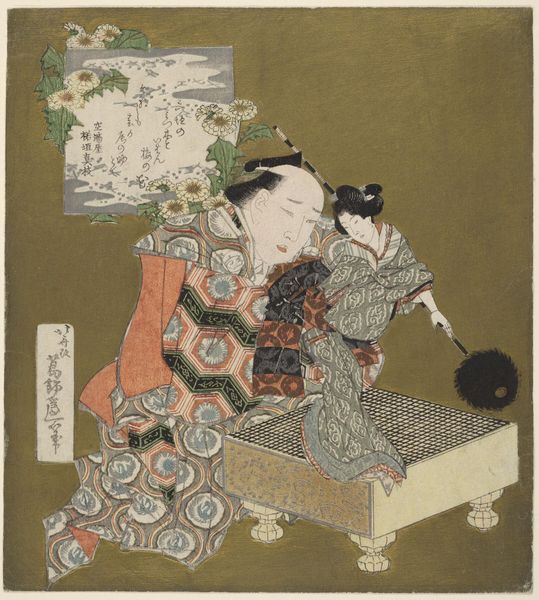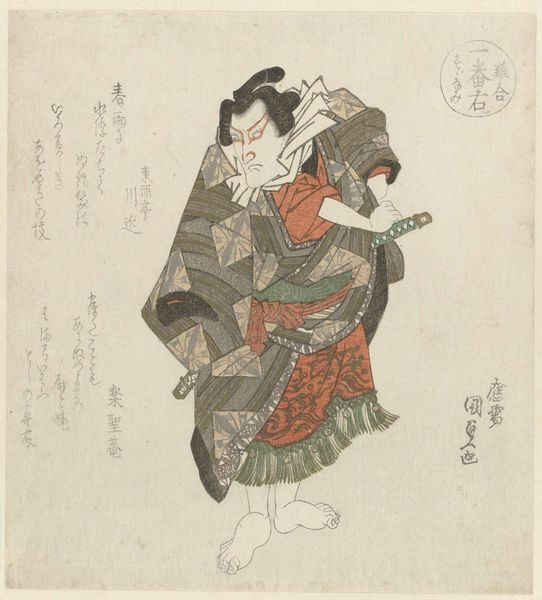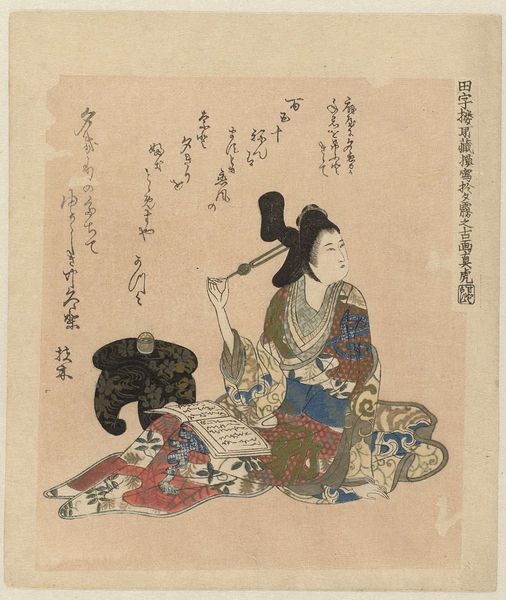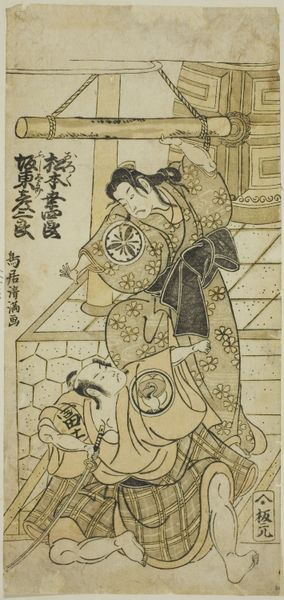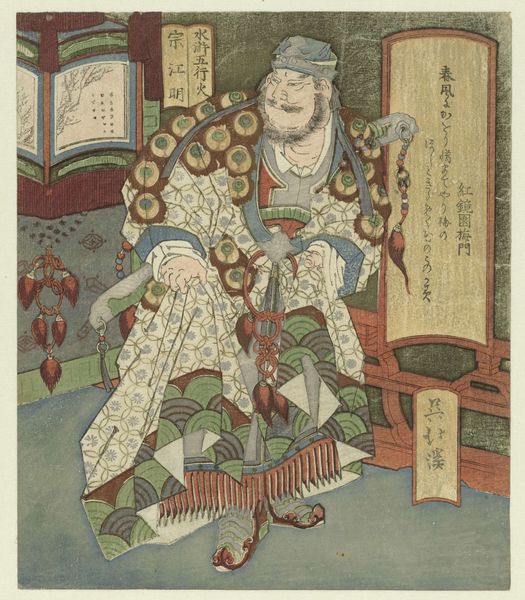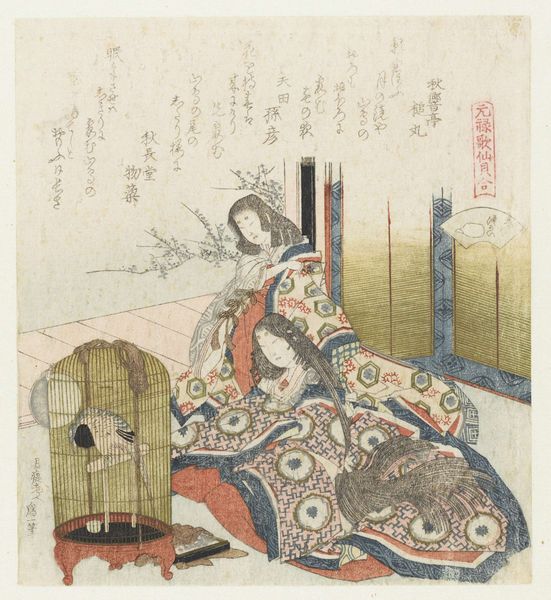
Actors Ichikawa Danjūrō VII and Bandō Zenji III 1823
0:00
0:00
print, ink, woodblock-print
#
portrait
# print
#
ukiyo-e
#
ink
#
woodblock-print
#
decorative-art
#
decorative art
#
watercolor
Dimensions: 8 1/4 × 7 1/16 in. (20.9 × 18 cm) (image, sheet, shikishiban)
Copyright: Public Domain
Curator: I’m drawn to how theatrical this print feels, it's practically bursting with performance. This is "Actors Ichikawa Danjūrō VII and Bandō Zenji III," a woodblock print created around 1823 by Utagawa Kunisada. Editor: You're right, the drama practically leaps off the page! I get a real sense of tension. The contrasts, between the solemn figure with the candle and that gleeful character attacking, really grabs you. What are we actually looking at, symbolically speaking? Curator: Good question! This ukiyo-e print, now at the Minneapolis Institute of Art, likely depicts a scene from a Kabuki play. The two actors, in character, embody conflicting forces – perhaps reason versus wild impulse, or control versus chaos. It plays with a certain degree of humor, which makes it more captivating for me. Editor: Ah, Kabuki! That makes perfect sense. And that figure brandishing the hair… the symbolism is strong. The raised fists and open mouth - a signifier of fury and unrestrained energy - is quite iconic. This reminds me, actually, of the imagery used later in political cartoons to portray upheaval. Is there a direct link? Curator: It’s quite possible. Imagery always bleeds into other areas. These actors were superstars, basically the celebrities of their time. This woodblock print serves as both promotional material and a snapshot of cultural memory. The text inscribed above them also seems relevant. Do you think it is linked to the characters’ traits? Editor: The text absolutely anchors the meaning, creating another layer of storytelling. It's intriguing how Kunisada uses lines to define their emotional states, all while celebrating these famed figures. The faces, the robes - even the simple candle – everything points to a bigger story being played out. It really encapsulates how emotions can be visualized. Curator: Absolutely! Kunisada turns everyday faces and familiar roles into conduits of dramatic force, doesn’t he? A lot can be inferred by looking at his work. It does speak a universal language in some ways. Editor: I see this piece differently now than I did a moment ago, I initially considered it busy but appreciate the thought placed into it. Thanks for unveiling these deeper resonances; it helps decode a different world. Curator: My pleasure. Artworks like this remind me that the most enduring pieces are always echoing, and constantly re-inventing what’s at stake when human beings look at one another.
Comments
minneapolisinstituteofart about 2 years ago
⋮
Right sheet of a diptych. Related to the plav Gohiiki tsuwamono no majiwari 御贔屓竹馬友達, performed at the Ichimura Theater, 1822, eleventh month.
Join the conversation
Join millions of artists and users on Artera today and experience the ultimate creative platform.
